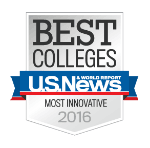The Sound Explorations project, led by the Consortium for Innovation and Transformation in Music Education64 at Arizona State University, is in the process of developing six connected music learning playlists organized around the following themes:
- Building instruments and interfaces:
- Coding and programming music
- Connecting music and culture
- Jamming: Solo and Groups
- Making beats
- Producing original music
Sound Explorations: Creating, Expressing, and Improving Communities, the full title of our project, gives a sense of the types of engagement we will encourage. Each playlist’s multiple pathways will guide youth along experiences addressing national Core Arts Standards artistic practices of creating, performing, responding, and connecting through interest-based musical practices. Learning experiences will emphasize creativity and self-expression, encouraging youth to consider and act upon how music can improve people’s lives.
The goal of the playlist set is to provide rich musical contexts that connect formal (i.e. middle and high school music programs) non-formal (i.e. community or after-school music programs), and informal (i.e. homes or libraries) settings.
Playlists will foster musical inquiry and creativity, deepen musical skills and understandings, and strengthen participants’ sense of selves as musical people who make a difference in their communities and society.
So far we’ve identified several design challenges and opportunities that we are thinking through as we continue our work. Some examples include:
- How might we design and facilitate learning experiences with an ethic of inquiry and project-based learning in a playlist format?
- How might we support opportunities for rich, playful, and satisfying musical engagement through the learning experiences even if the learner has limited access to resources?
- What type of structures make the most sense for learners to navigate and engage with learning experiences (XPs) that are organized in varied ways that enable multiple pathways within the same playlist?
We are collaborating with partners such as NYU’s MusEdLab, Today’s Future Sound, and Rosie’s House: A Music Academy for Children, consultants with content expertise, pre-service and in-service music educators, teaching artists, community youth organizations, and youth to help us answer these and other questions that emerge.
I’ll provide an update to some of these issues in the next post.
In the meantime, feel fee to participate in the development of our music learning playlists through our crowdsourcing initiative with the following form65 (and share widely):

